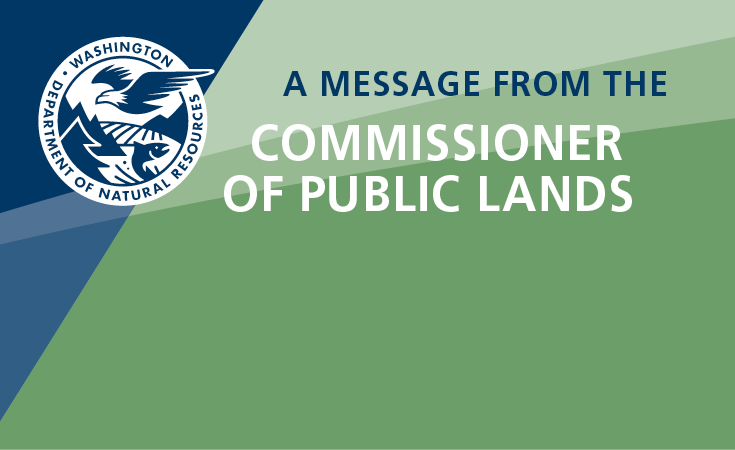DNR and Partners Clear Halfway Point of 20-Year Forest Health Strategic Plan Treatment Goal
News Date:
July 9, 2024
Public and private forest managers have performed nearly 800,000 acres of forest health treatments in central and eastern Washington since 2017 to reduce wildfire risk and improve forest resilience
The Washington State Department of Natural Resources published a report Monday detailing the scope and scale of forest health treatments completed in central and eastern Washington since the launch of the 20-Year Forest Health Strategic Plan in 2017.
As of May 31, 2024, the Department of Natural Resources (DNR) and its partners had completed 790,790 acres of treatments in central and eastern Washington, with about 391,465 acres of those treatments occurring within the more than three dozen priority landscapes identified within the 20-Year Strategic Plan. The 144,673 treatment acres completed in 2023 is more than 31,000 acres more than the previous single-year high set in 2018.
The gross number of treatment acres includes 365,633 acres of forest health treatments on lands managed by the USDA Forest Service, 164,349 treatment acres on DNR state trust lands, and 139,099 acres of treatments completed by the DNR Service Forestry Program. A full breakdown of acres treated by land manager, year, and other categories can be viewed by clicking here
“To have completed almost 800,000 acres of forest health treatments in less than seven years is an epic achievement we should all be proud of,” said Commissioner of Public Lands Hilary Franz. I have pushed my staff and our partners in the fight against our forest health crisis to think bigger and to aim higher to restore our forests to health and resilience. Though we will reach our initial goal sooner rather than later, we must treat it like a checkpoint, not the finish line."
Many forest health treatments require multiple activities take place to truly achieve objectives such as fuels reduction, wildlife habitat restoration, and creation of potential control lines for use in the event of a wildfire. Completed treatments also require regular maintenance to remain effective.
“Working at this pace and scale would not be possible without the $500 million commitment the State Legislature made when it passed my House Bill 1168 in 2021 to fully fund implementation of the 20-Year Forest Health Strategic Plan and so many other efforts to prevent catastrophic wildfires, restore forest health, and improve community resilience in the face of climate change,” Franz said.
The more than 790,000 treatment acres reported as of May 31 represents a nearly 190,000-acre increase since the most recent progress report issued in October 2023, but close to 100,000 acres of that increase includes treatments completed prior to fall of last year.
Tens of thousands of treatment acres completed by the DNR Service Forestry Program went unreported prior to this year. Agency staff recognized the discrepancy early in 2024 and re-entered the data using the same criteria used by each of the other reporting agencies and partners since 2017.
Additional factors that led to a record-setting year of forest health treatments included increased amounts of prescribed fire and non-commercial thinning. These treatments not only help make forests more able to not only survive, but benefit from low-severity wildfires, but also provide tools for wildland firefighters to use when responding to new fire starts.
DNR publishes a yearly report with examples of where less severe wildfires may complement completed forest health treatments. Click here to read the 2023 Work of Wildfire report
“Properly completed and maintained forest health treatments are a game changer for fire management personnel,” said Tim Love, Assistant Region Manager of Wildland Fire Management in DNR’s Northeast Region. “These treatment areas allow us the opportunity to safely engage the fire due to the moderated fire behavior which correlates to shorter flame lengths and less intense heat, making it easier and safer for our ground resources.”
It is also important to note that number of treatment acres reported is likely a small undercount due to different agencies reporting their completed and in-progress forest health projects at different times during the year. Data reported for 2023 should be considered mostly complete, but data reported for 2024 should be considered mostly incomplete.
###
MEDIA CONTACT
Communications Manager
360-902-1000


